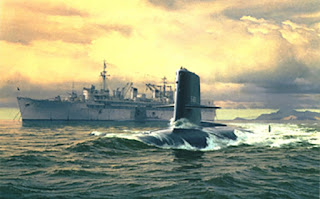1. USS Thresher Submarine Disaster:
2. Kursk Submarine Disaster:
3. USS Scorpion Submarine Disaster:
4. HMS Thetis Submarine Disaster:
HMS Thetis (N25) was a Group 1 T-class submarine of the Royal Navy which served under two names. Under her first identity, HMS Thetis, she commenced sea trials on 4 March 1939. She sank during trials on 1 June 1939 with the loss of 99 lives. She was salvaged, repaired and recommissioned as HMS Thunderbolt serving in the Atlantic and Mediterranean theatres until she was lost with all hands on 14 March 1943. This makes Thetis one of the few military vessels that have been lost twice with her crew in their service history. More details
5. K-129 Soviet Submarine Disaster:
6. Ming 361 Submarine Disaster:
7. K-8 Soviet submarine Disaster:
8. K-278 Komsomolets Submarine Disaster:
K-278 Komsomolets was a nuclear-powered attack submarine of the Soviet Navy. The boat sank in 1989 and is currently resting on the floor of the Barents Sea, one mile deep, with its nuclear reactor and two nuclear warheads still on board. It sank after a fire broke out in the aft engineering compartment on its first operational patrol. The Komsomolets was able to surface after the fire started and remained afloat for approximately 5 hours before sinking. Of the 42 crewmembers who died, only 4 were killed by the fire and smoke, while 34 died of hypothermia and drowning in the frigid waters while awaiting rescue that did not arrive in time. More details
9. USS S-4 Submarine Disaster:
10. K-152 Nerpa Submarine Disaster:









